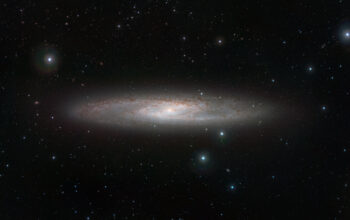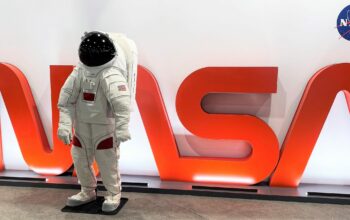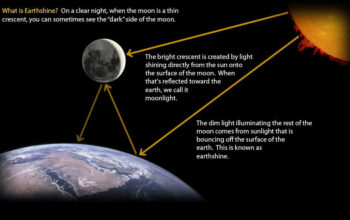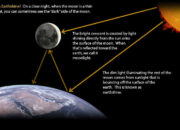In the ambit of astrophysical phenomena, the nature and dynamics of stellar wind interaction with surrounding medium has been an area of profound inquiry. Among these interactions, the concept of a bow shock arises as a crucial player in the astrophysical lexicon. Typically, when a star traverses through an interstellar medium, the supersonic stellar wind generated by its solar activity produces a formidable bow shock in front of it. This shock serves as a demarcation between the stellar wind and the ambient interstellar gas, leading to an array of observable consequences. However, recent observations have unveiled a perplexing phenomenon referred to as the “Bow Shock No-Show,” eliciting a spectrum of inquiries and scholarly curiosity within the astrophysical community.
Bow shocks are paramount in understanding stellar behavior, particularly when investigating the life cycle of stars in dynamic environments. When a star moves through an interstellar medium at a speed that exceeds the local speed of sound, it comprehensively disrupts the medium due to its kinetic energy. This disruption is typified by the formation of a bow shock, reminiscent of the bow wave produced by a vessel navigating through water. Consequently, it is implausible for stellar winds to propagate unimpeded, and the resultant bow shock creates intriguing observational opportunities that can enhance our understanding of cosmic structures in the vicinity of stars.
However, a growing body of observational data suggests instances where one might expect to detect a bow shock, only to find none. This jarring incongruity has ignited scholarly discussion regarding the thermodynamics of stellar environments, particularly focusing on the mechanisms that govern the interaction between stellar winds and interstellar mediums. The absence of a detectable shock could imply potential shortcomings in existing models of astrophysical wind dynamics. This prompts questions about the physical and chemical attributes of the interstellar medium, which encompass temperature, composition, and density profiles that deviate from the hypothesized norms.
Intriguingly, several factors could elucidate the causes behind the “Bow Shock No-Show.” One consideration pertains to the variability of the interstellar medium itself. The medium is often not homogenous but exhibits complex structures influenced by the gravitational interplay with nearby celestial bodies and localized phenomena, such as molecular clouds or shock fronts from supernovae. This variation can significantly alter the expected conditions under which a bow shock is likely to form, thereby rendering its detection improbable despite existing stellar dynamics. Furthermore, fluctuations in stellar wind intensity over time can influence the conditions necessary for bow shock formation, introducing an additional layer of complexity to the interaction framework.
The absence of the anticipated bow shock also reveals a great deal about stellar lifecycle stages. In particular, massive stars undergoing rapid evolution—especially during phases of high mass loss or when transitioning to supernova stages—may dramatically alter the dynamics of their stellar winds. This rapid evolution can result in the formation of a stellar bubble; a radial region where stellar winds exert pressure on the surrounding medium, effectively displacing it and modifying the expected bow shock dynamics. Herein lies a multi-faceted interplay, as stars embark on a journey of stellar evolution through varying phases, thus influencing the overarching spatial and temporal interaction of their winds with the ambient interstellar medium.
Moreover, stellar environment peculiarities present an intriguing enigma. For instance, stellar locations within clusters or astrobiologically rich gravitationally-bound systems alter the angular momentum and relative velocities of stars. As such, one star’s wind could interact more vigorously with the wind of neighboring stars than with the interstellar medium itself, leading to bow shock formations or absences that challenge conventional wisdom in stellar astrophysics. This highlights the need for extensive cross-correlation studies among stellar wind dynamics, interstellar medium properties, and galactic structure to derive a cohesive understanding of the bow shock phenomenon.
In addition, the technological advancements in observational astrophysics must be acknowledged. The advent of more refined observational instruments, such as the James Webb Space Telescope, endows researchers with the capability to probe deeper into these mysterious regions of space. By enhancing our observational precision, these tools offer potential insights into scenarios where traditional expectations of bow shocks fail. As instruments continue to evolve, detections of elusive phenomena may become more widespread, thereby revealing a more nuanced understanding of far-reaching cosmic interactions.
In conclusion, the “Bow Shock No-Show” phenomenon encapsulates a convergence of complex astrophysical processes that warrants further exploration. The nexus between stellar winds and interstellar medium remains a fertile ground for inquiry, presenting not only an intriguing scientific curiosity, but also underscoring the continual need to reassess existing theoretical frameworks. The mysteries surrounding these celestial interactions link to broader considerations of the lifecycle of stars, the dynamics of cosmic environments, and the intricacies of galactic structures. Therefore, as astronomers cultivate a deeper comprehension of these listening voids, the universe unveils yet another layer of complexity, inviting investigators to tread further into the delicate dance of cosmic phenomena that shape the grand tapestry of the cosmos.










